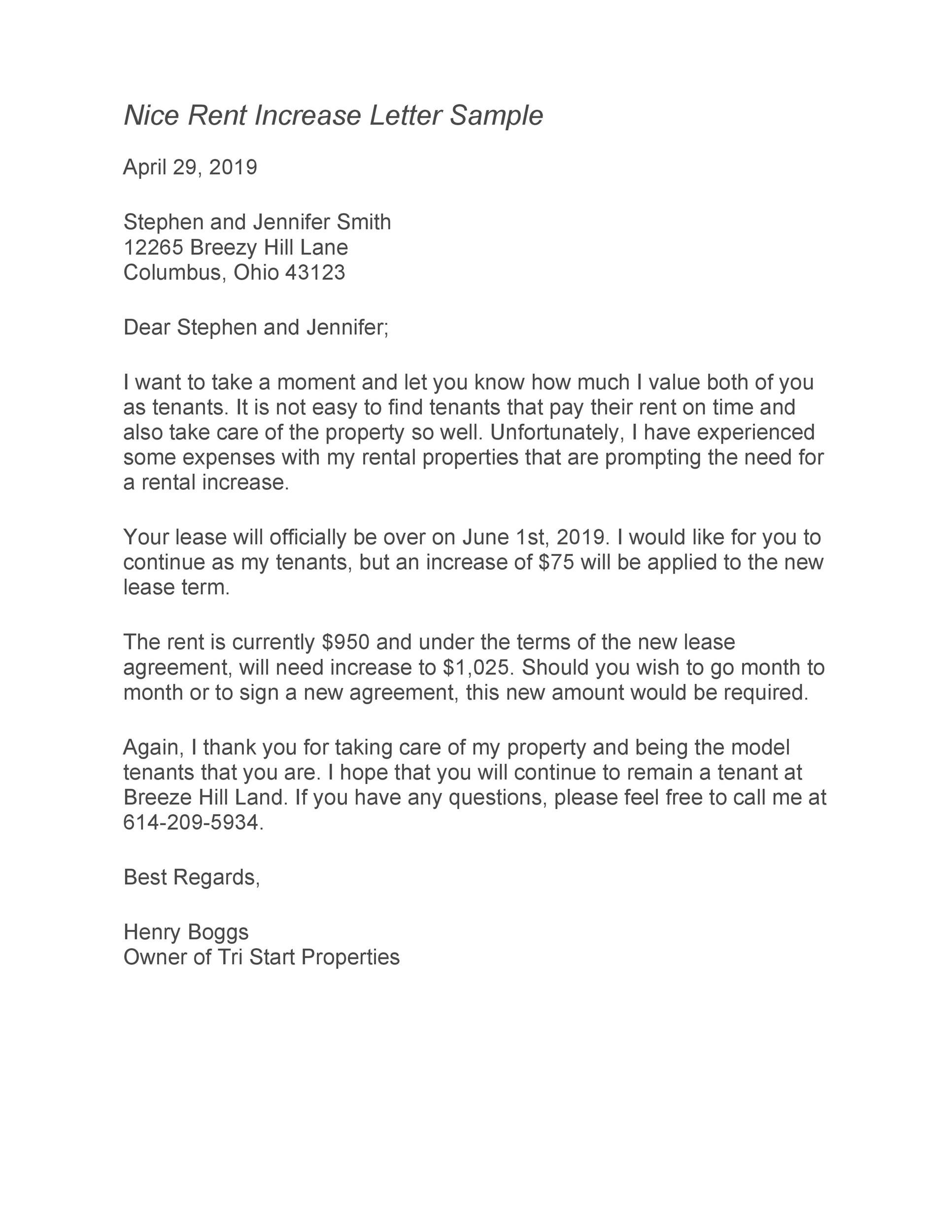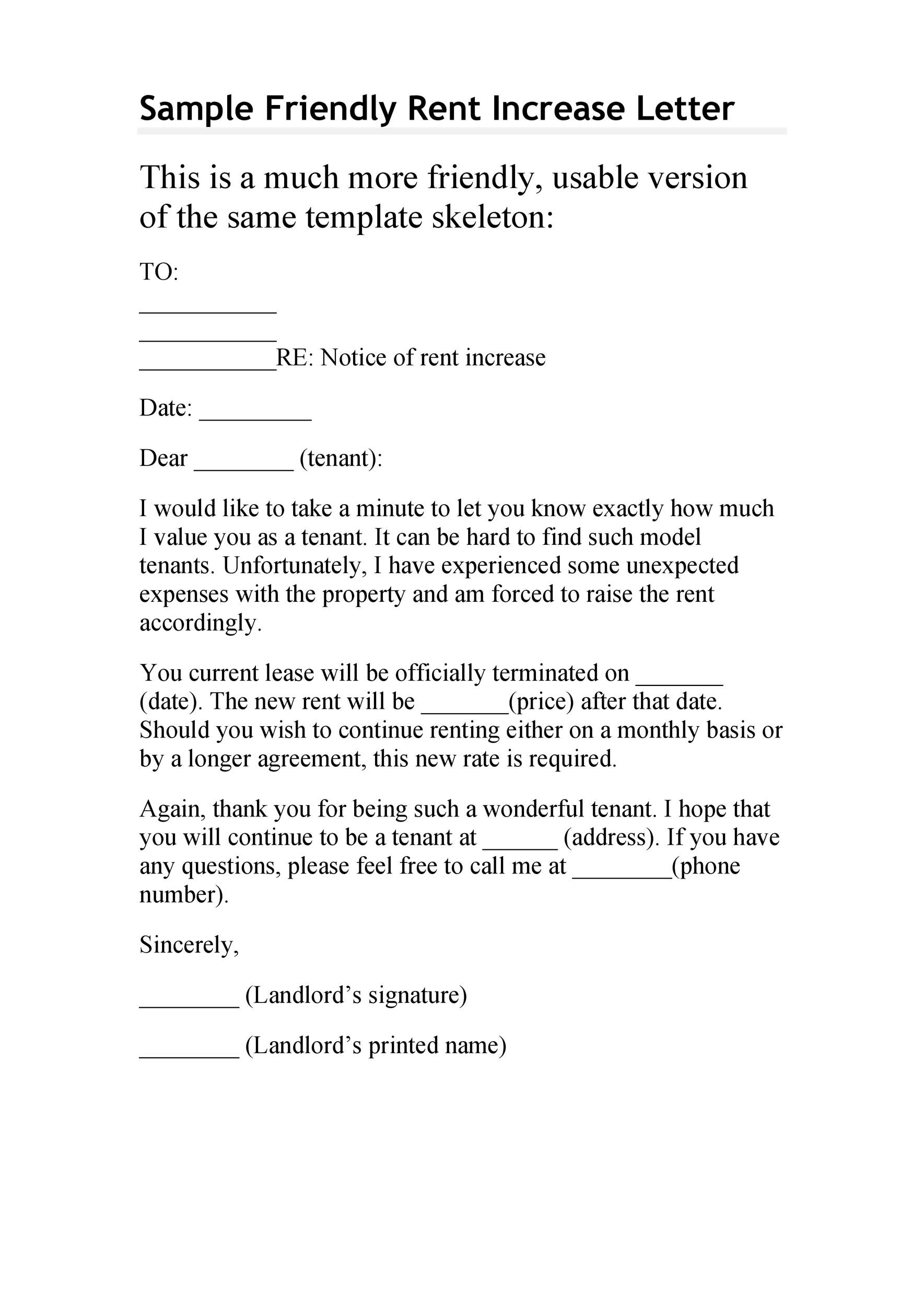Rent Increase Letter Format: How Landlords Can Communicate Changes Clearly
Rent Increase Letter Format: How Landlords Can Communicate Changes Clearly
Blog Article
The rental industry is constantly evolving, making it important for landlords to keep up-to-date with most readily useful techniques and legal requirements. When it comes to raising rent, providing a landlord rent increase letter to tenants isn't only a courtesy—it's a legitimate prerequisite to make certain openness and submission with hire laws. That blog features the key appropriate criteria landlords need to remember when giving a rent raise page to tenants.
Knowledge Book Raise Regulations
Book regulations can vary significantly based on site, therefore landlords should familiarize themselves with regional regulations. Critical places to analyze contain:
Recognize Time Demands: Most jurisdictions requirement a certain detect period before a book raise may be implemented. As an example, California legislation needs landlords to supply a 30-day discover for raises less than 10% and a 90-day notice for higher increases.
Rent Control Regulations: Areas with lease get a grip on procedures impose restricts how significantly landlords can increase rent. Towns such as New York, Los Angeles, and San Francisco have rigid lids on book hikes.
Lease Agreement Provisions: Lease agreements usually outline the phrases below which rent could be increased. Landlords should review these terms prior to making adjustments.

Communicating with Tenants
A well-crafted book improve page not only outlines the new phrases but additionally helps keep a positive landlord-tenant relationship. The page should include:
Apparent and Concise Details: Specify the current lease total, the new book volume, and the effective date. Avoid vague language to prevent misunderstandings.
Thinking for the Improve: Whilst not legally expected in all parts, describing the rationale behind the raise (e.g., increasing property taxes, preservation costs) fosters trust and understanding.
Paperwork Conformity: Ensure the letter matches format and distribution standards, such as being written in apparent language and sent via an accepted technique (e.g., qualified send, hand-delivered with acknowledgment).
Moment Is Every thing
Moment plays a crucial position in rent increases. Sending the page too late could break regional regulations, while giving it too early might create unnecessary tension. To hit the proper balance:
Regard the Lease Timeline: For fixed-term leases, rent raises can generally just happen when the lease has been renewed. For month-to-month agreements, raises are allowed with correct notice.
Plan Ahead: Deliver lease improve words well before the recognize period ends to give tenants ample time and energy to prepare for the change.
Be Prepared for Tenant Reactions
Tenants might take the increase, negotiate, or even choose to vacate the property. To organize for any outcome:
Record Everything: Hold files of all transmission linked to the lease increase. This may offer as evidence in case there is disputes.
Negotiate if Required: Be open to reasonable tenant issues, especially if vacancy charges locally are high or if the tenant has a powerful record of reasonable payments.
Be Flexible: Consider solutions, like scattering the increase around several months, to help ease the burden on tenants.

Staying In front of Legal Difficulties
Failing to check out appropriate procedures may have serious consequences for landlords, including fines and invalidated rent increases. Visiting with a legitimate advisor or property administration skilled can help prevent potential pitfalls.
Final Feelings
Giving a book improve letter is more than just a proper stage; it's a critical legal requirement that assures equity and transparency. By understanding regional laws, communicating effectively, and organizing strategically, landlords may implement book increases while sustaining powerful tenant relationships. Report this page